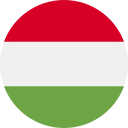Cambridge IELTS 16 - Akadémiai - 2. teszt - Olvasás - 1. rész (1)
Itt megtalálhatod a Cambridge IELTS 16 - Academic tankönyvben található 2. teszt - Olvasás - 1. szöveg (1) szókincsét, hogy segítsen felkészülni az IELTS vizsgádra.
Áttekintés
Villámkártyák
Betűzés
Kvíz

a small item made of metal or plastic with words or a logo on it that a person carries to show their membership in an organization

jelvény, tagsági kártya
to determine or figure out when something happened or was created

datál, meghatározni a dátumot
to categorize or organize something into specific groups or classifications

kioszt, hozzárendel
the period that began about 1100 BC when people used iron tools for the first time

Vaskor, Vas kora
causing a lot of strong public disagreement or discussion

vitatott, ellentmondásos
difficult to understand or interpret

rejtélyes, titokzatos
someone who studies or records historical events

történész, történetíró
relating or belonging to the time before history was recorded

őskori, történelem előtti
a member of a male religious group that lives in a monastery

szerzetes, apáca
a place of residence for a community of nuns or monks that is smaller or less important compared to an abbey

perjelség, kolostor
to make something visible

felfed, mutat
shining or reflecting light in a bright way

ragyogó, fénylő
to clean something thoroughly by scrubbing it hard with a rough or tough material

dörzsöl, alaposan tisztít
more than average, but not too much

meglehetősen, elég
to make a connection between someone or something and another in the mind

társít, összekapcsol
to put effort and energy into doing something

vesződik, fáradozik
to remove items or obstacles, often to create a clear or open space

eltakarít, elrendez
to reveal, uncover, or make visible something that was hidden or covered

felfed, leleplez
the visible edge or contour that marks the limits of an object

kontúr, sziluett
strong evidence or proof that supports something, emphasizing its validity or significance

tanúság, bizonyíték
the state of happening or existing over a period of time without change or interruption

folytonosság
to cover a significant distance or expanse

nyúlik, terjed
a period of one thousand years, usually calculated from the year of the birth of Jesus Christ

évezred, millennium
using artistic forms and conventions to create effects; not natural or spontaneous

stilizált, művészi
a creation that is a visual or tangible rendering of someone or something

ábrázolás
streamlined in shape or design, reducing resistance and allowing for smooth, efficient movement or appearance

elegáns, aerodinamikus
physically detached, especially where two parts are normally connected

ficamodott, szétválasztott
to flow or move freely in the wind, like hair or fabric

lobog, száll
having a refined and graceful appearance or style

elegáns, kifinomult
to become less intense and gradually diminish

olvad, eloszlik
all the parts of an area of land that can be seen at one time

táj, panoráma
to place something in a particular position or setting

elhelyez, helyez
(of a surface) having a sharp slope or angle, making it difficult to climb or walk up

meredek, szakadékos
the period when iron was not discovered and people used bronze to make tools

Bronzkor, Bronz időszak
used typically before a date to show that it is not exact

körülbelül, kb.
a secular designation used to represent dates in the Gregorian calendar before the traditional reference point of the birth of Jesus Christ

a közös korszak előtt, a mi időszámításunk előtt
a diagram or illustration that is used to show or explain something, such as a chart, graph, or drawing

ábra, grafikon
a sloping surface or area of land that forms the side of a hill or mountain

hegyoldal, domboldal
happening at irregular intervals or spread far apart over various locations

szétszórt, elhelyezett
very great in amount or number

hatalmas, óriási
(United Kingdom) a political division that has its own local government

megye, közigazgatási egység
a creature that is unusually large in size

óriás, gigantikus lény
a mark or an object formed by two short lines or pieces crossing each other

kereszt, keresztjel
a large design or drawing made on the ground, usually by arranging stones, removing soil, or shaping the land, so it can be seen clearly from above

geoglif, óriási talajrajz
a group of soft, white rock layers made mainly from the remains of tiny sea animals, often found in hills, cliffs, or underground

kréta, kréta mészkő
an area of open hills with chalk soil, usually covered in grass and found in southern England

nyílt dombvidék kréta talajjal, kréta dombok
| Cambridge IELTS 16 - Akadémiai |
|---|